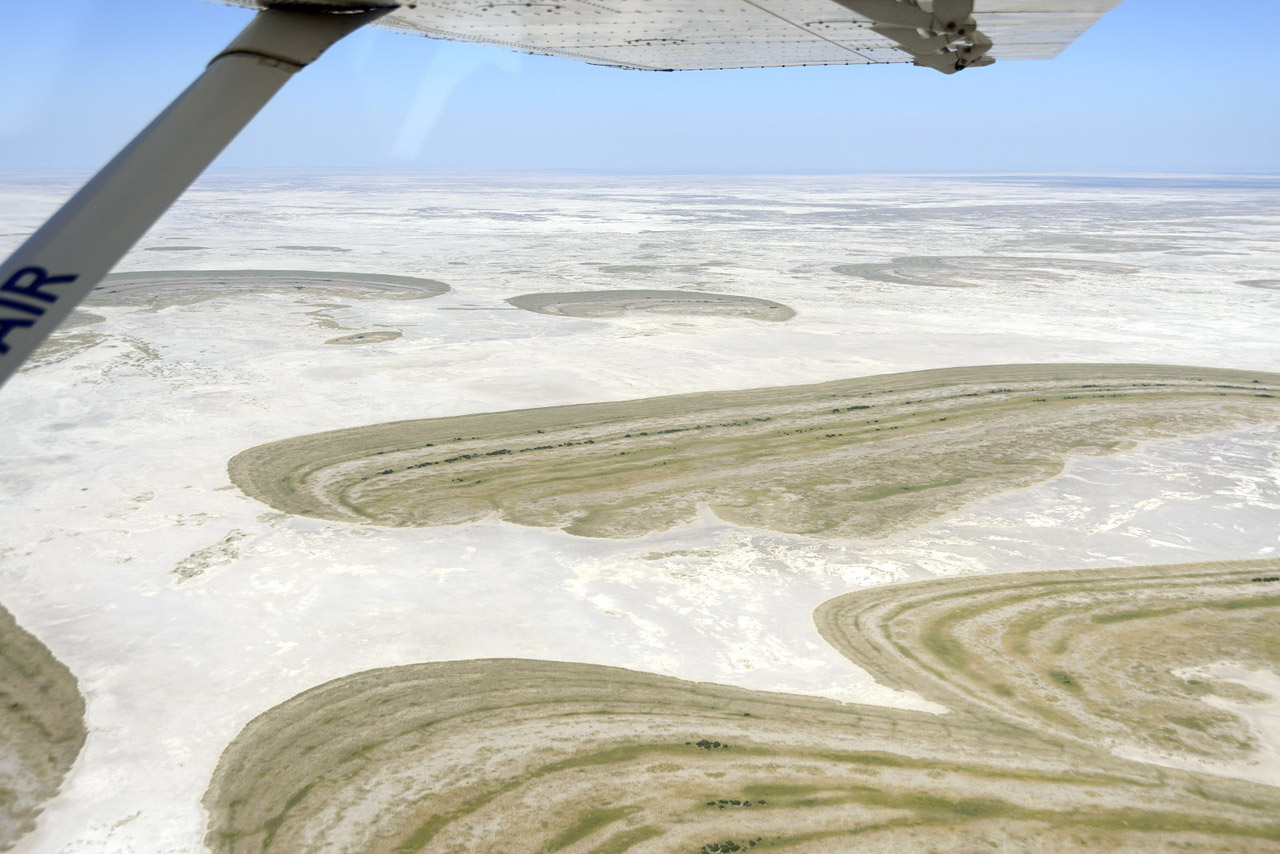

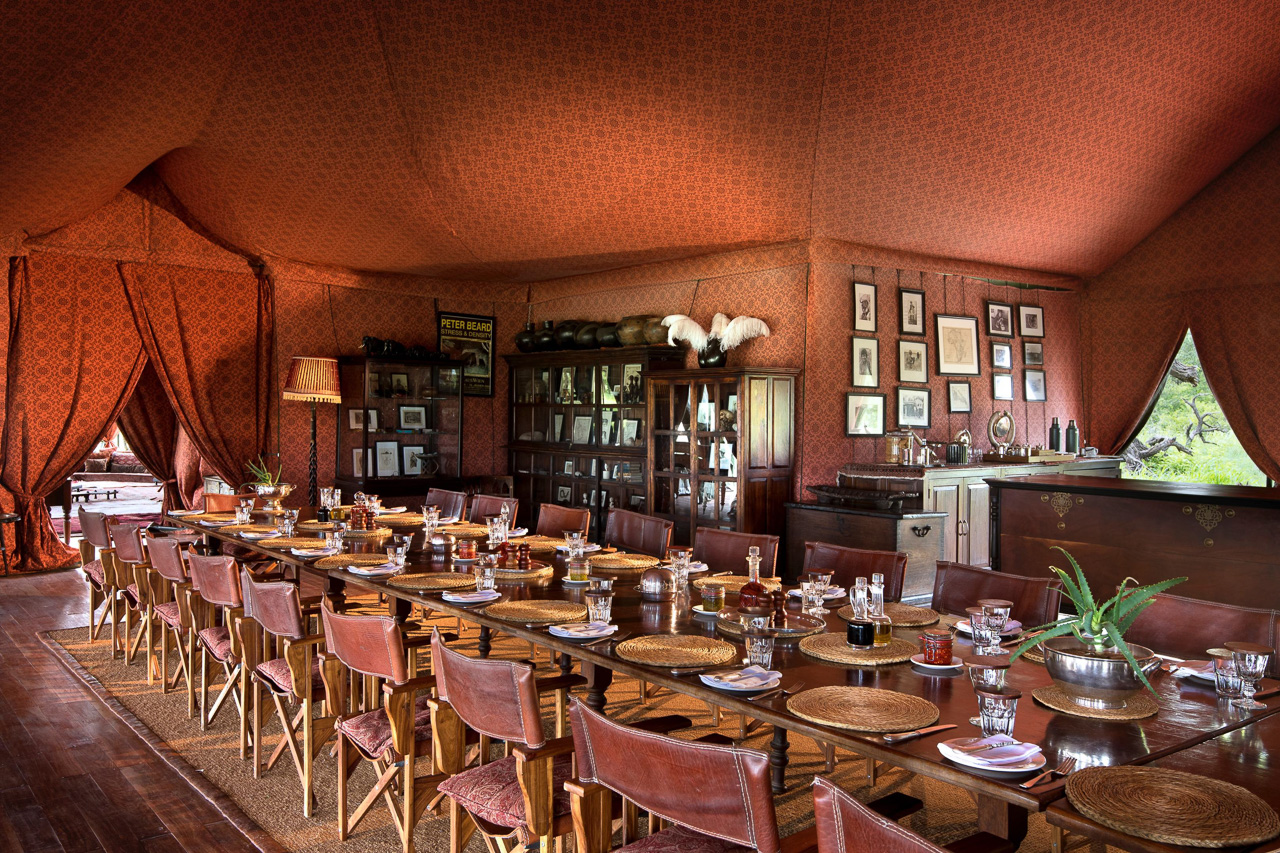
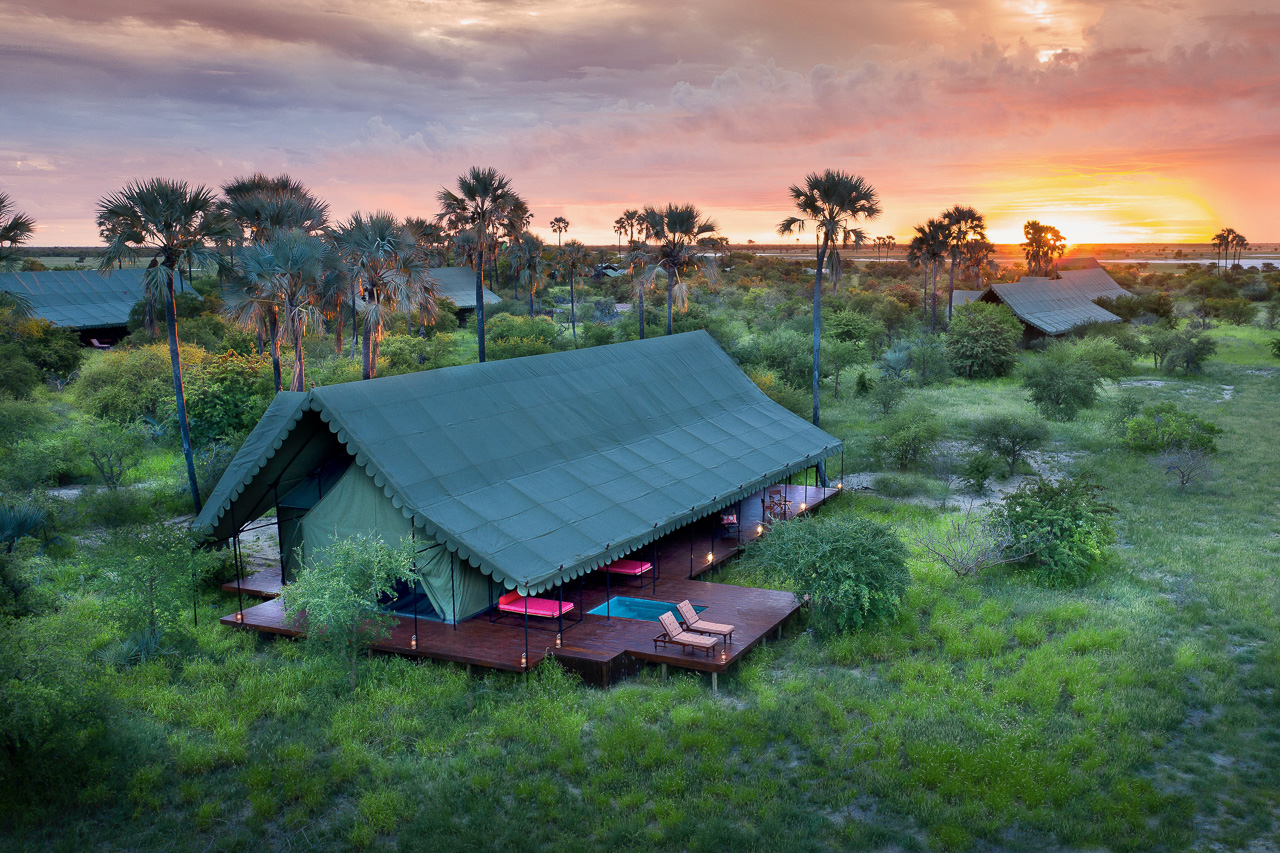
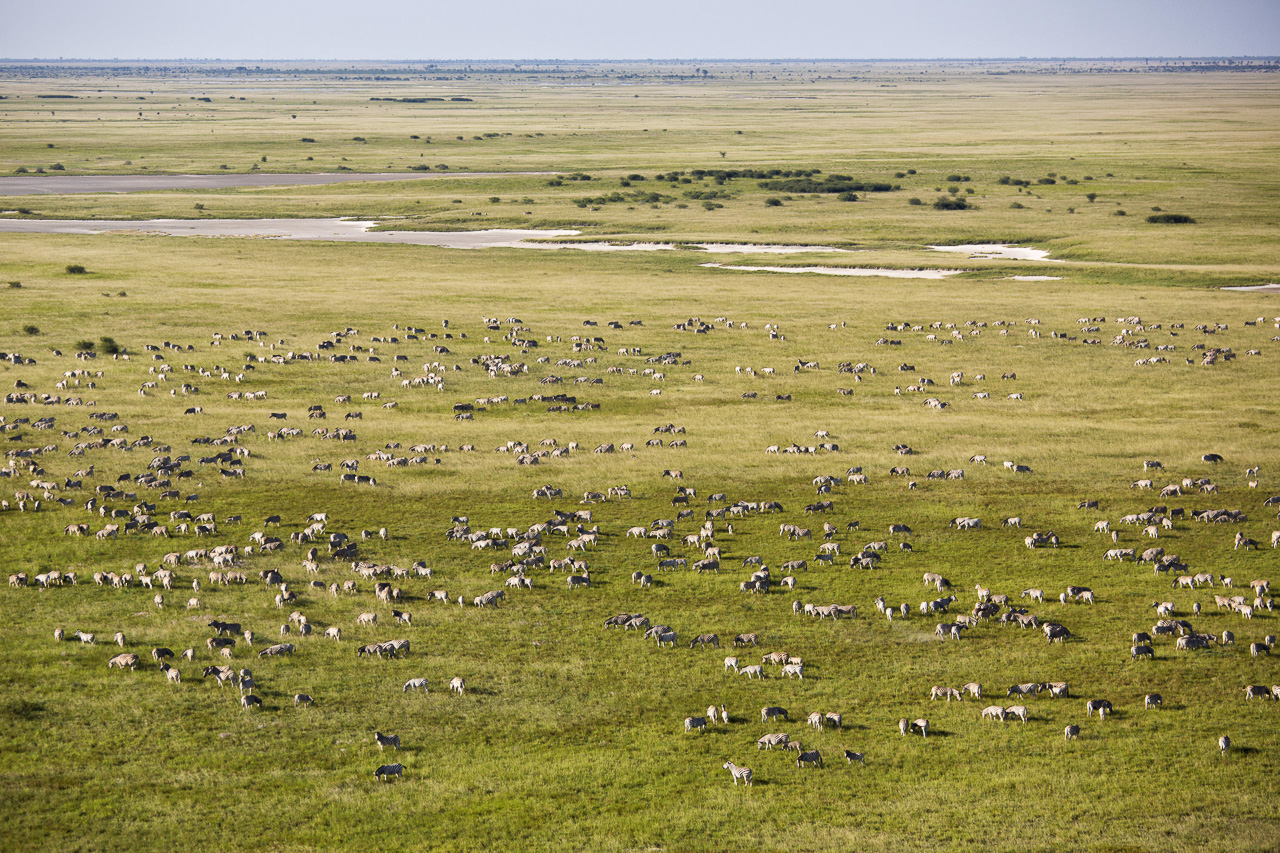
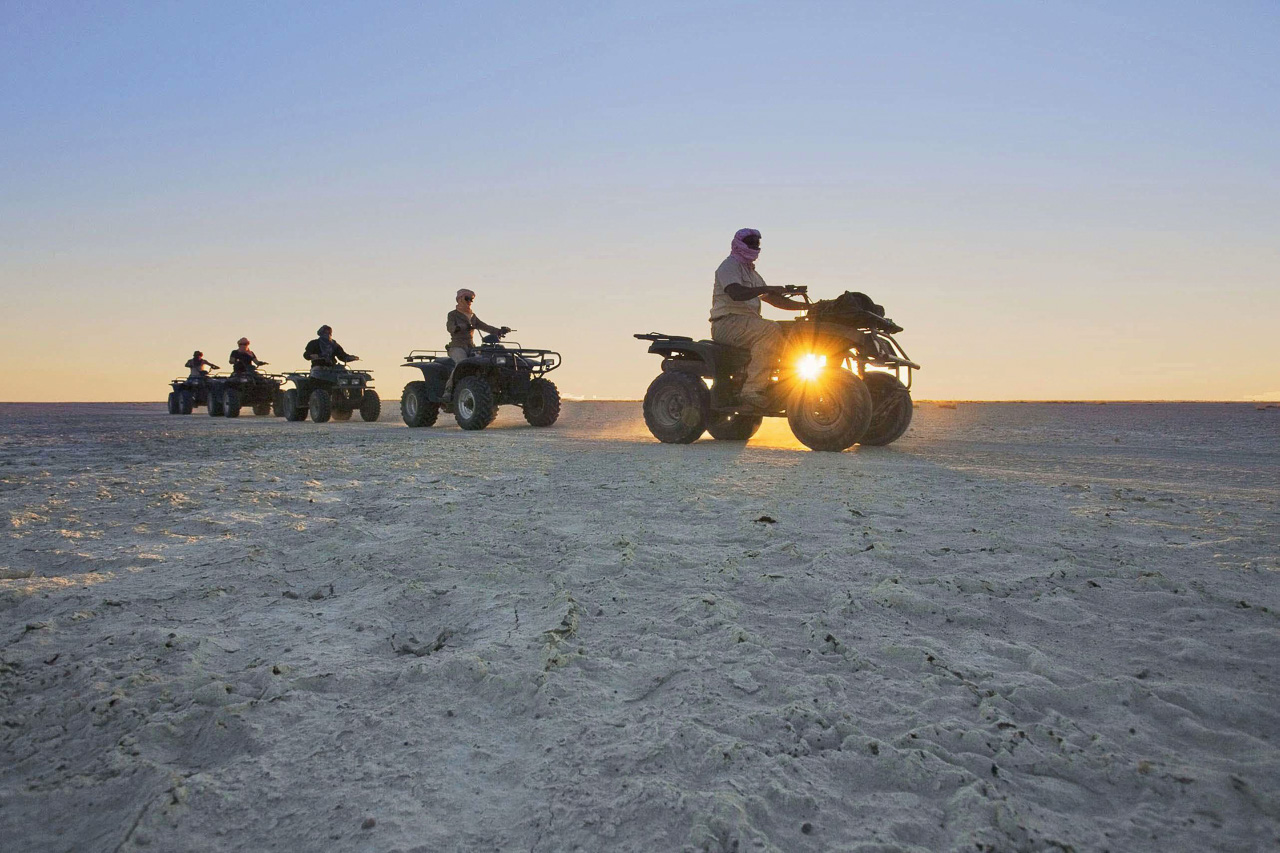
Accommodation
The iconic Jack's Camp has undergone a full rebuilt in 2021 and now boasts nine very large canvas tents (7 twin, 2 double, each 135 sq metres indoors and 135 sq metres outdoors). Each guest tent is equipped with en-suite bathrooms, indoor and outdoor showers, an overhead bed cooling system for hot days and a private plunge pool on the veranda. The style of the camp has remained the same, in keeping with the desert environment - a sort of Bedouin chic mixed with the colonial style of the 1940s. A collection of tasteful and also antique decoration artifacts complete the picture.
A really impressive swimming pool pavillon, the larger mess tent and the elegant Persian tea tent remain and invite guests to linger and indulge. In addition, a library with an interesting selection of books, antique pool table and a well-stocked drinks chest make your time in between safaris even more delightful and relaxing.
Electricity is available 24 hours both in the rooms and in the main area. There is no wifi in the rooms, only at the curio shop.
Jack's Camp is situated in a private concession bordering the Makgadikgadi National Park. You may also like neighbouring sister camps San Camp and Camp Kalahari
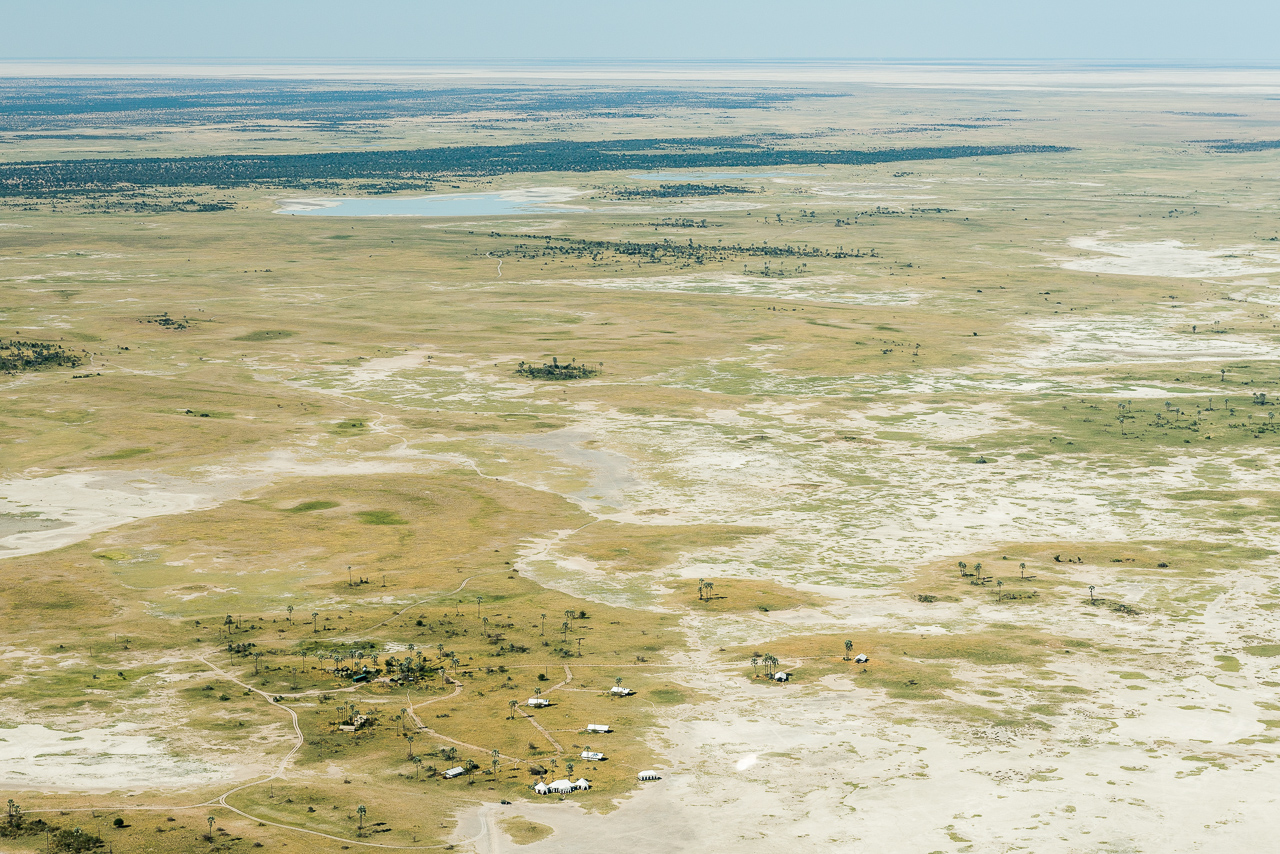
The Makgadikgadi Pans are dried up salt-water lakes, which formed part of an immense ancient inland sea that also encompassed the Okavango Delta and the Central Kalahari. Located on the edge of the salt plains are several camps that offer activities on the pans, and introduce visitors to the life of the local San people.
The pans can only be accessed during the dry season. The camps only use quads with broad tyres as they cause the least amount of damage. You can also choose to sleep under the stars during multi-day tours that take you to Kubu Island and back during the dry season.
There is not much wildlife here during the dry season, but the area is on a migration route taken by zebra and wildebeest, which leads from the Nxai Pans, through the Makgadikgadi and on to the Boteti River. The animals migrate south from the Nxai Pans to the Boteti River at the start of the dry season. They remain here until the beginning of the wet season, when they return to the Nxai Pans and give birth to their young. The Nxai Pans stretch out northwards from the Makgadikgadi Pans on the other side of the Maun-Nata road. This is also the home of the historic Baines Baobab, which has survived in this barren landscape for thousands of years.
If you would like to drive on the salt pans, then you must visit during the dry season. If you would like to experience the migration of zebra and wildebeest, then it is best to visit during the wet season. The pans fill with water during the wet season, making them the perfect breeding ground for thousands of flamingos and pelicans.
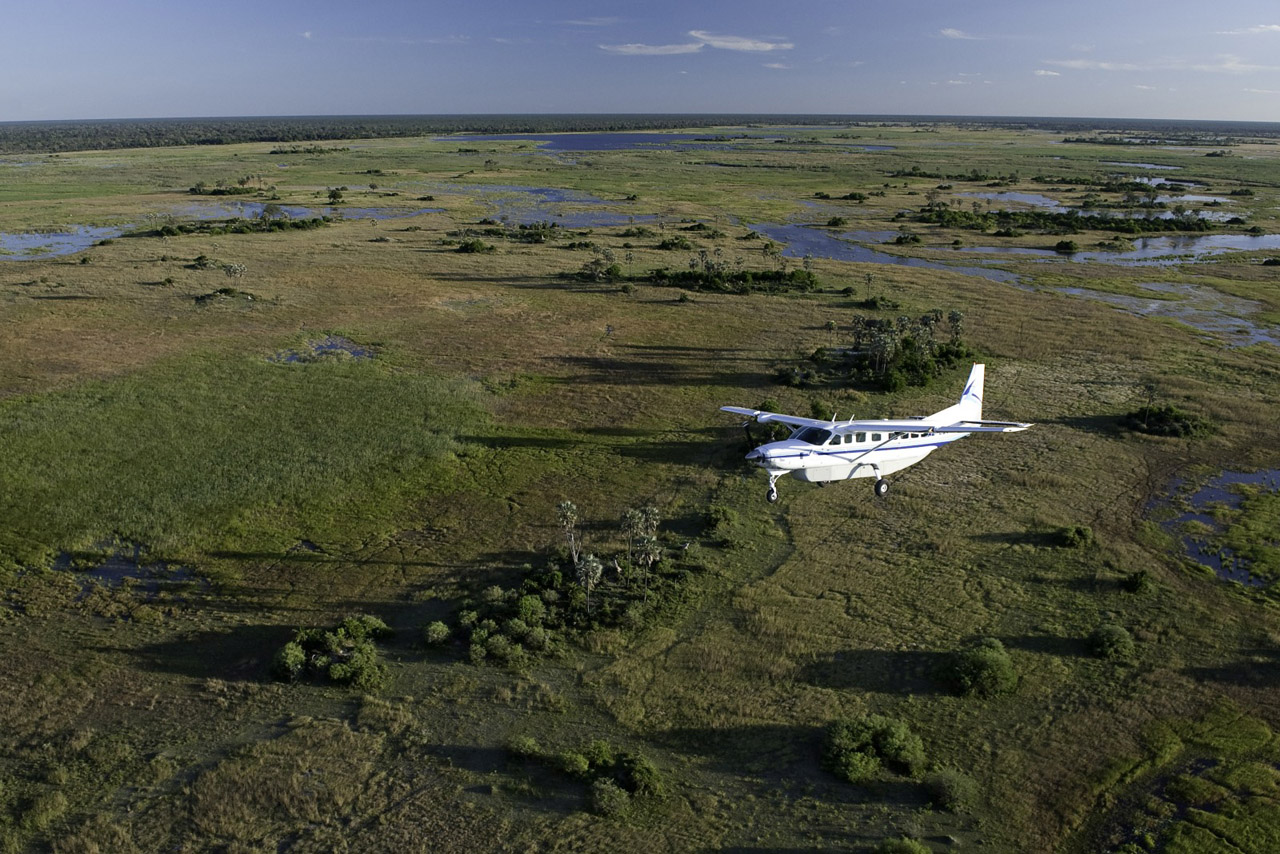

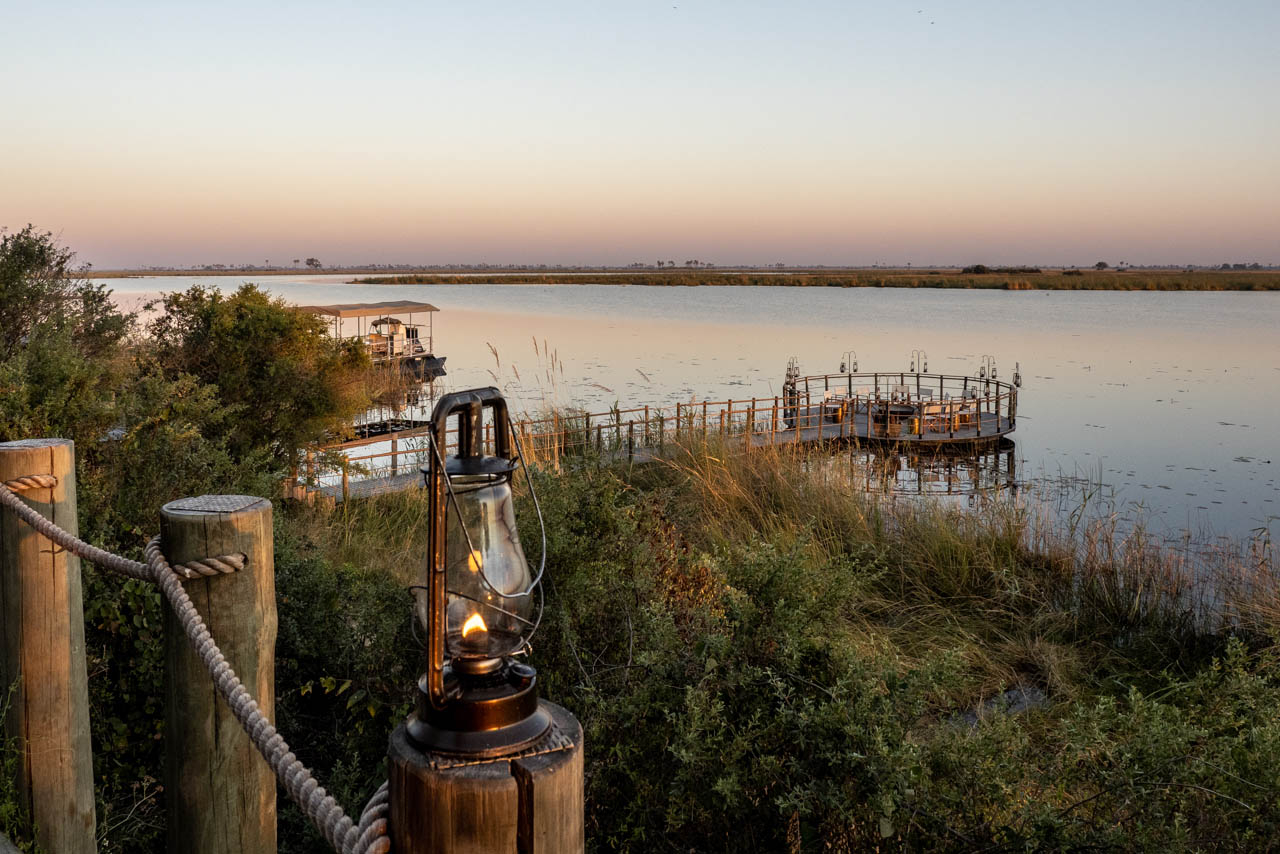
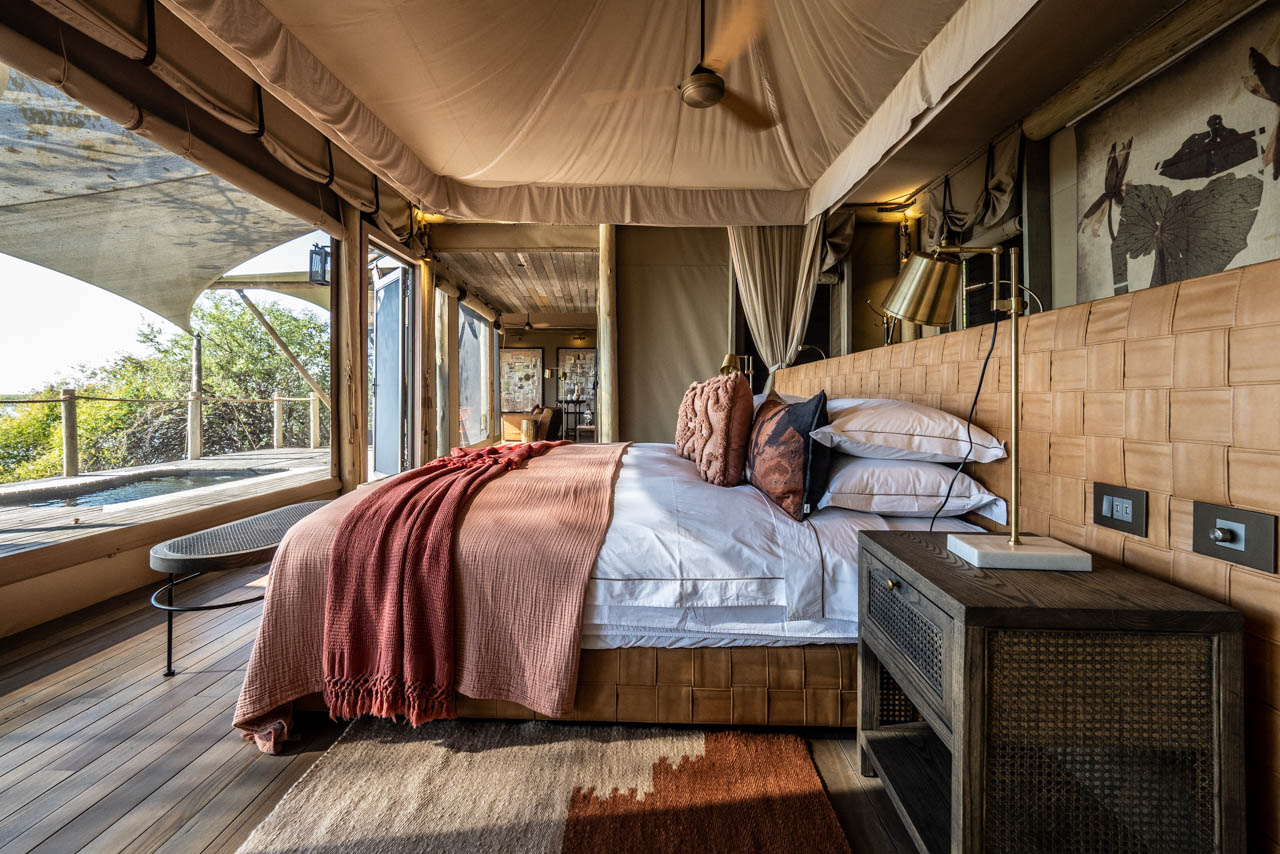
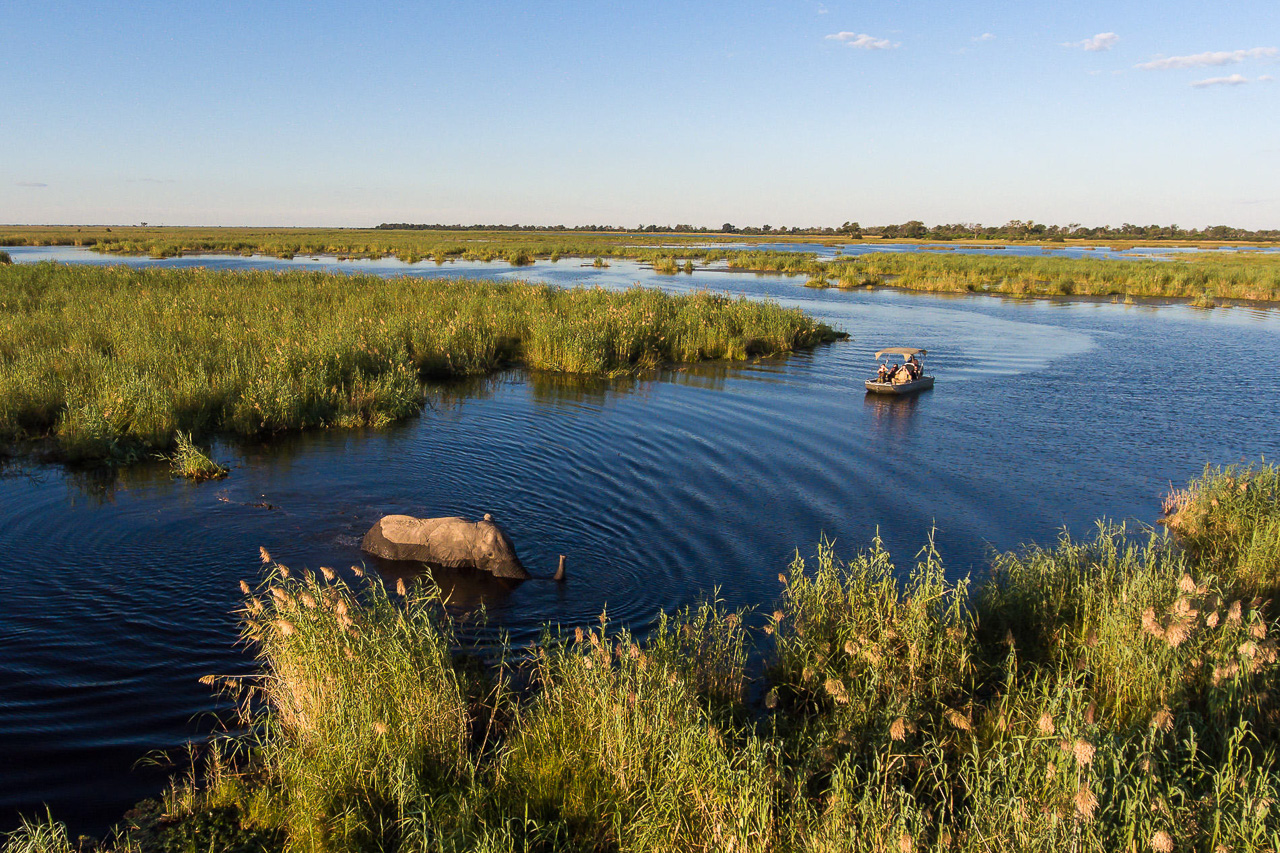
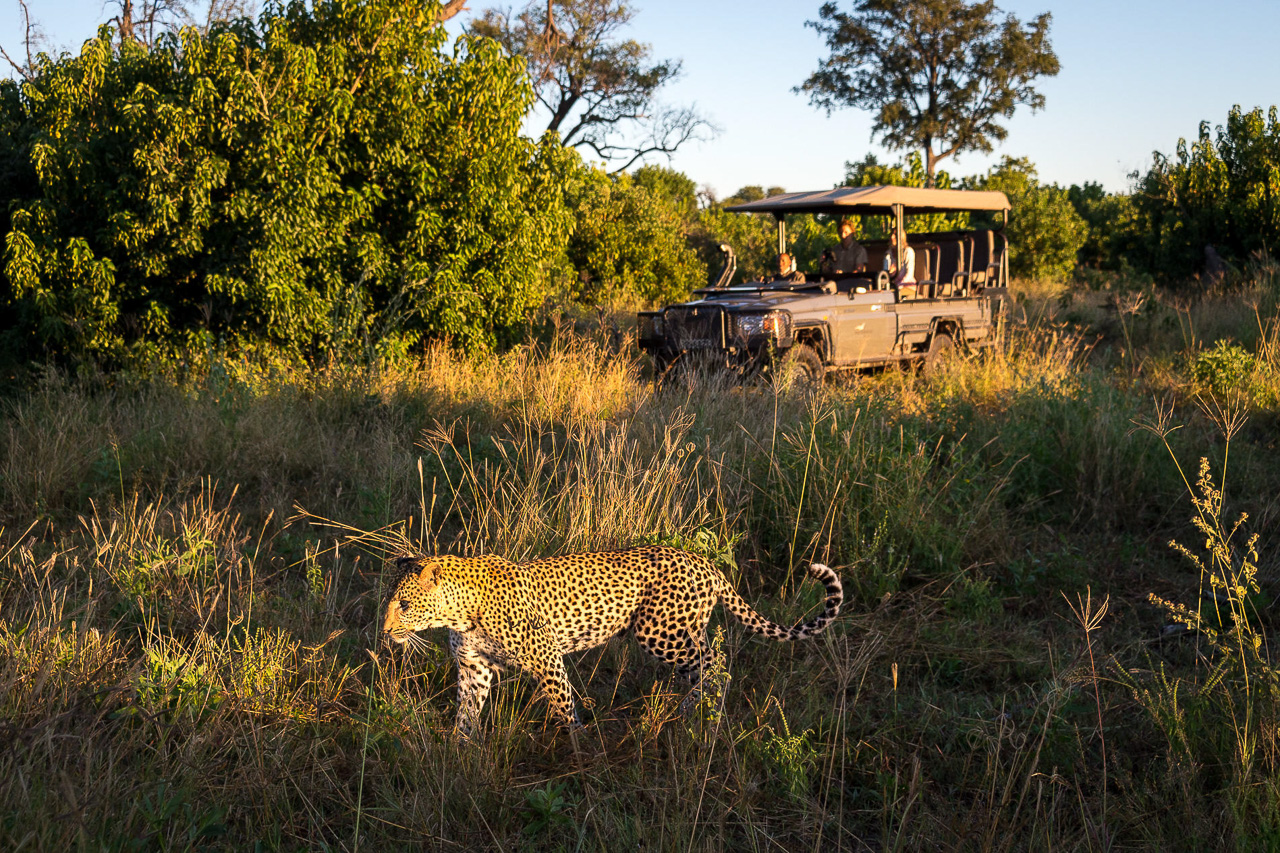
Accommodation
Duma Tau Camp - located in northern Botswana in the Linyanti area - features a modern, chic design in light and natural colours. The view of the large open expanse of water of the Osprey Lagoon is incredibly beautiful and unique in Botswana.
Wooden walkways lead to the eight beautiful and ultra spacious rooms (142m²), each with en-suite bathroom, indoor and outdoor shower, lounge and private veranda with plunge pool and views of hippos and elephants wading in the water. One of the rooms is a family room with two separate en-suite bedrooms connected by a shared lounge and a very large deck with its own splash pool.
The main area provides space for the restaurant, an airy lounge with bar and a large deck with fire pit. All of it facing the wildlife-rich Osprey Lagoon which is connected to the Linyanti via winding waterways. Flatboats and the barge are moored in front of the main building ready for excursions on the water. A long jetty leads out onto the water to a platform with a fire pit, a favourite amongst guests for having their evening drinks.
Little Duma Tau is Duma Tau‘s sister camp. The two camps are right next to each other and connected by elevated walkways. Osprey Retreat is built in between the two camps offering a spa, gym, curio shop, snack deli and a large swimming pool. This area is shared by both camps. Little Duma Tau Camp however has its own main building with pool and fire pit and, with only four rooms, is suitable for guests seeking a slightly more intimate experience.
Duma Tau Camp is only accessible by light aircraft. The camp is approx. 40 minutes drive from Chobe Airstrip. Flight time to Maun in a Cessna Caravan is 50 minutes, and 45 minutes to Kasane.
Duma Tau Camp is part of the private Linyanti Concession (1,200 km²). There are four camps in this concession: Duma Tau Camp, Little Duma Tau, Savuti Camp and Kings Pool Camp
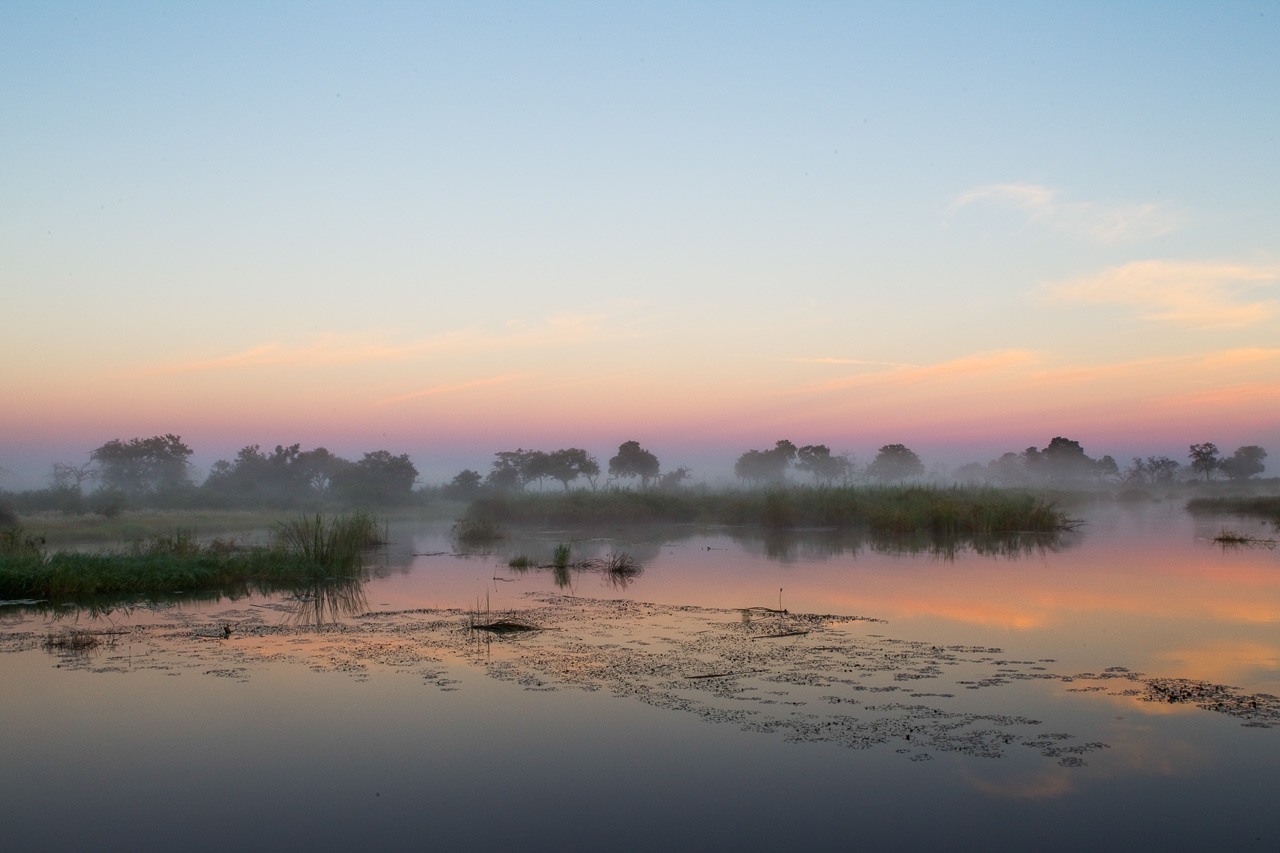
As in the Okavango Delta, we only book stunning, highly exclusive lodges situated in unspoiled nature that are often only accessible by air. The Linyanti region can be divided into four distinct areas, namely the Kwando Concession of Kwando Safaris, the Selinda Plains of Great Plains, the actual Linyanti Block of Wilderness and the Chobe Enclave, where African Bush Camps operate some of their camps.
The Linyanti region allows you to see clearly the influence of tectonic activity in the area. It is believed that the Okavango, Kwando and Zambezi rivers originally flooded much of Botswana, including the Makgadikgadi Pans. Today, the Kwando River flows through the Caprivi Strip in Namibia and heads south towards Botswana. The water hits a slight elevation, which dams the river and forms the Linyanti Wetlands. Here it takes a sharp turn to the east before continuing its journey as the Linyanti River. It then becomes the Chobe River at Kasane before finally flowing into the great Zambezi. The Linyanti Wetlands connect to the Okavango Delta via the Selinda Spillway, a kind of overflow system of the Okavango Delta. Water has been flowing here again during the winter months for several years now, making it the ideal location for canoeing safaris. The Okavango Delta’s increased water level has also returned water to the Zibadianja Lagoon – its outlet, the Savuti Canal, now has sometimes water running along its entire length, feeding the Savuti Marsh!
Although the area has seen dramatic changes in recent years, the Linyanti River still attracts a large number of elephant and buffalo from the Chobe Forests during the dry season, and is therefore still the perfect place to experience memorable game drives.
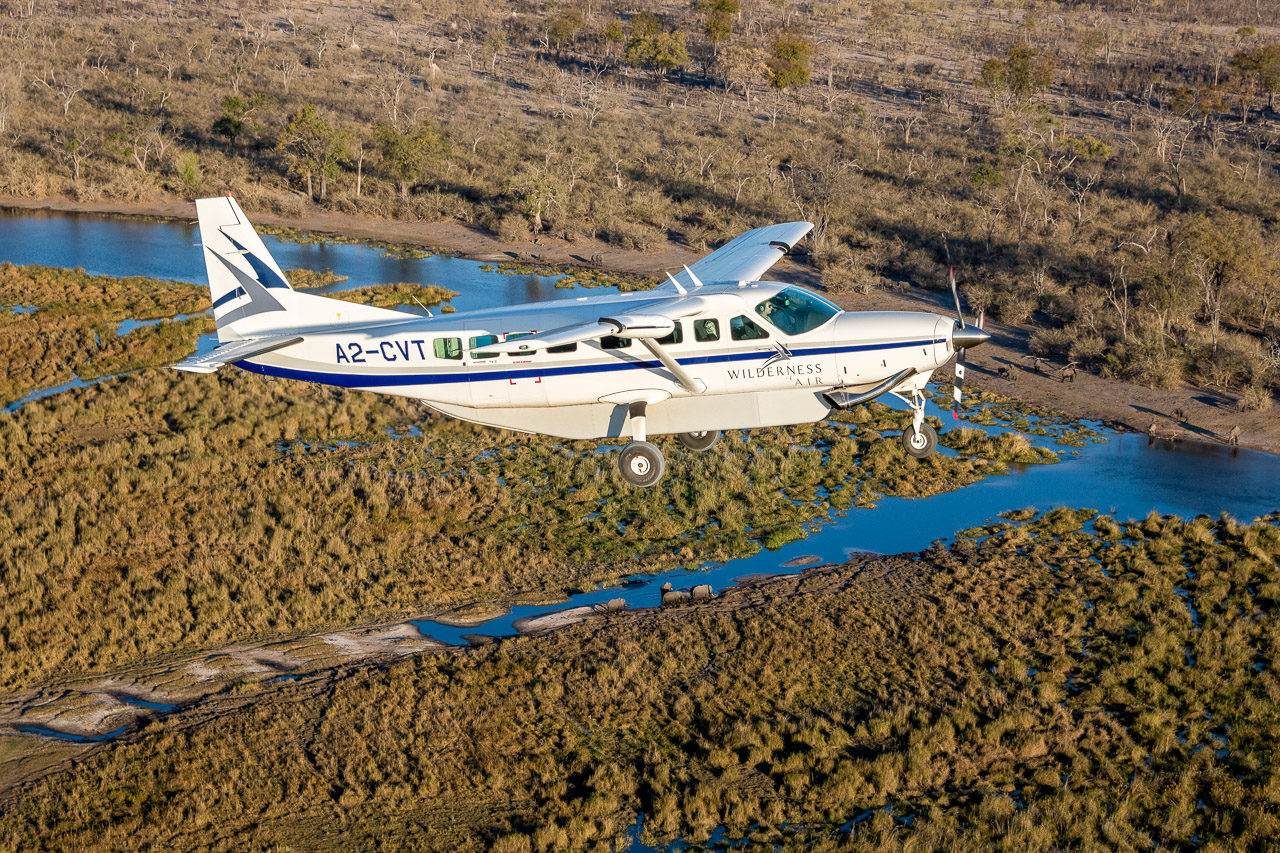

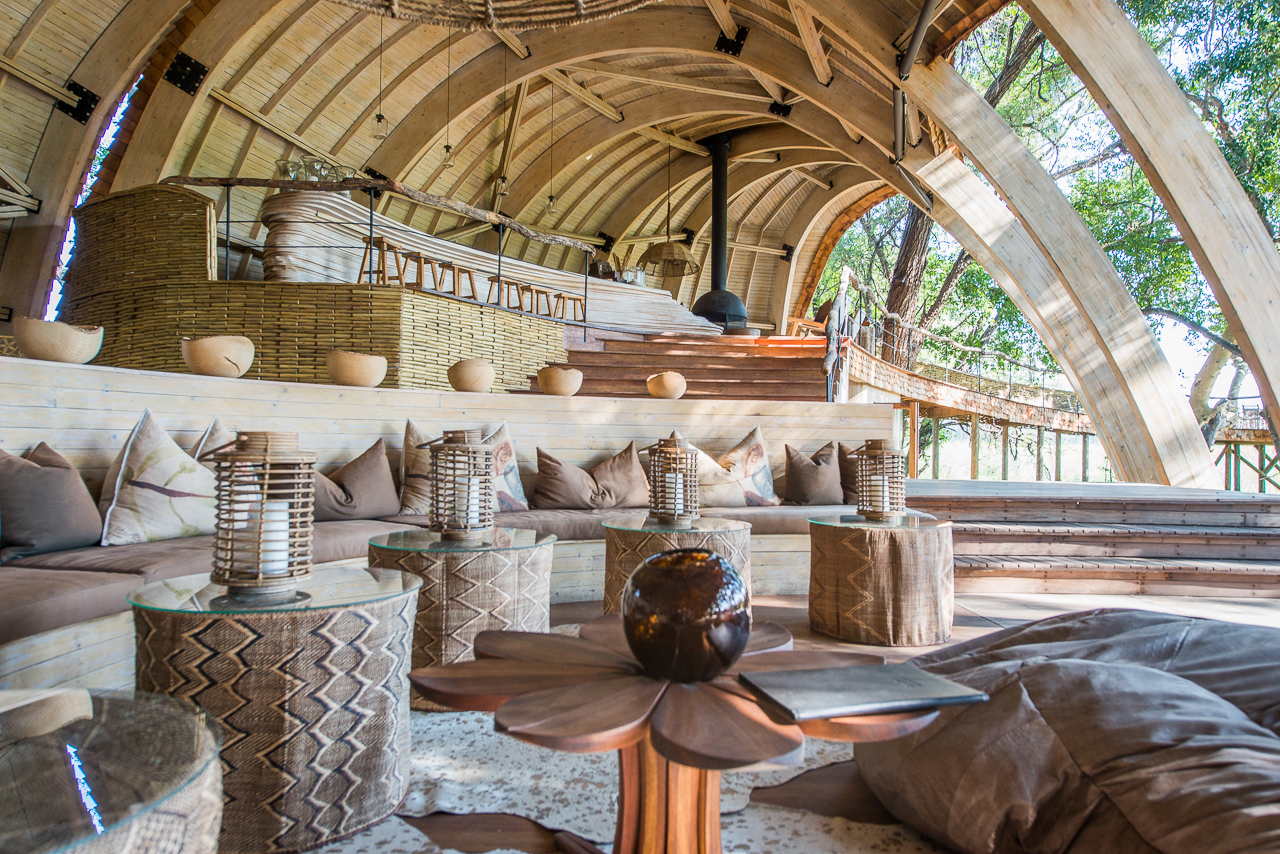
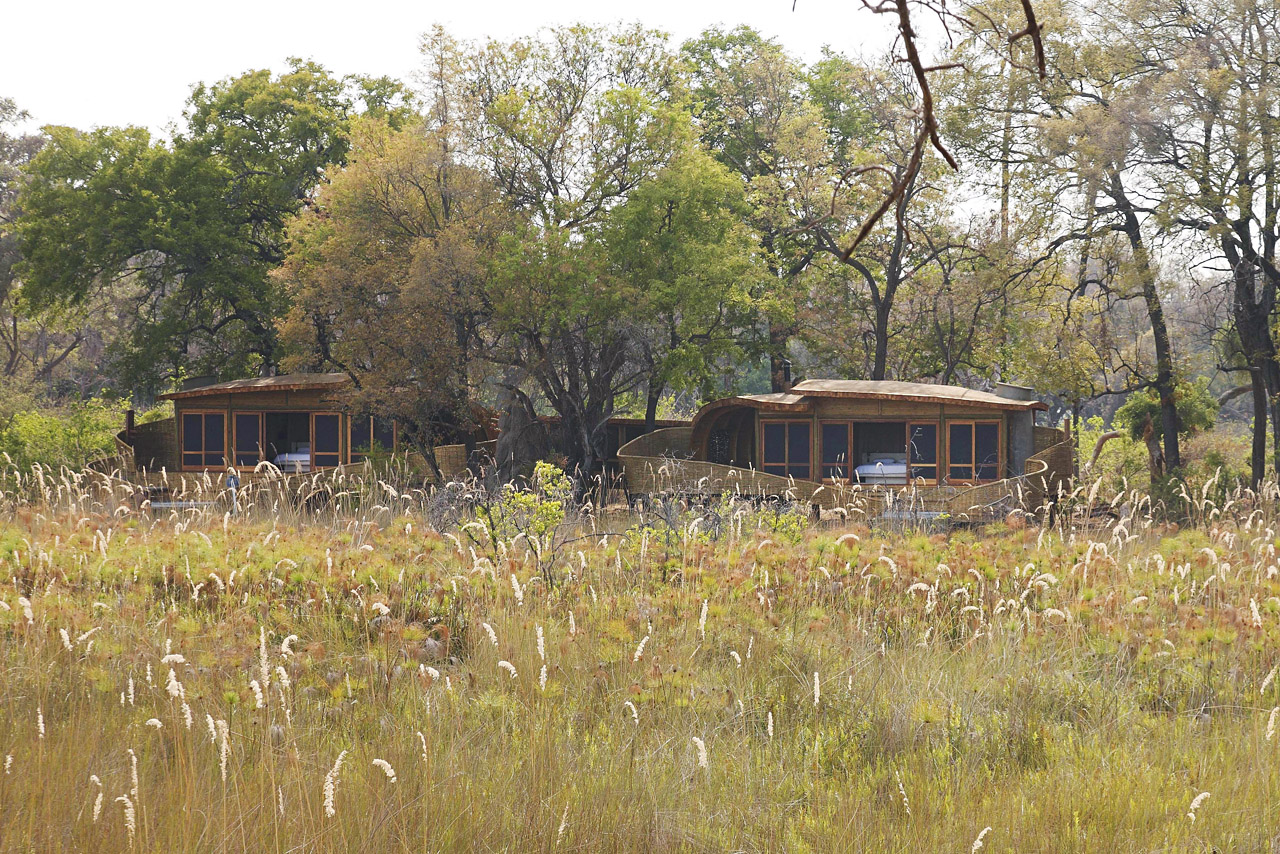
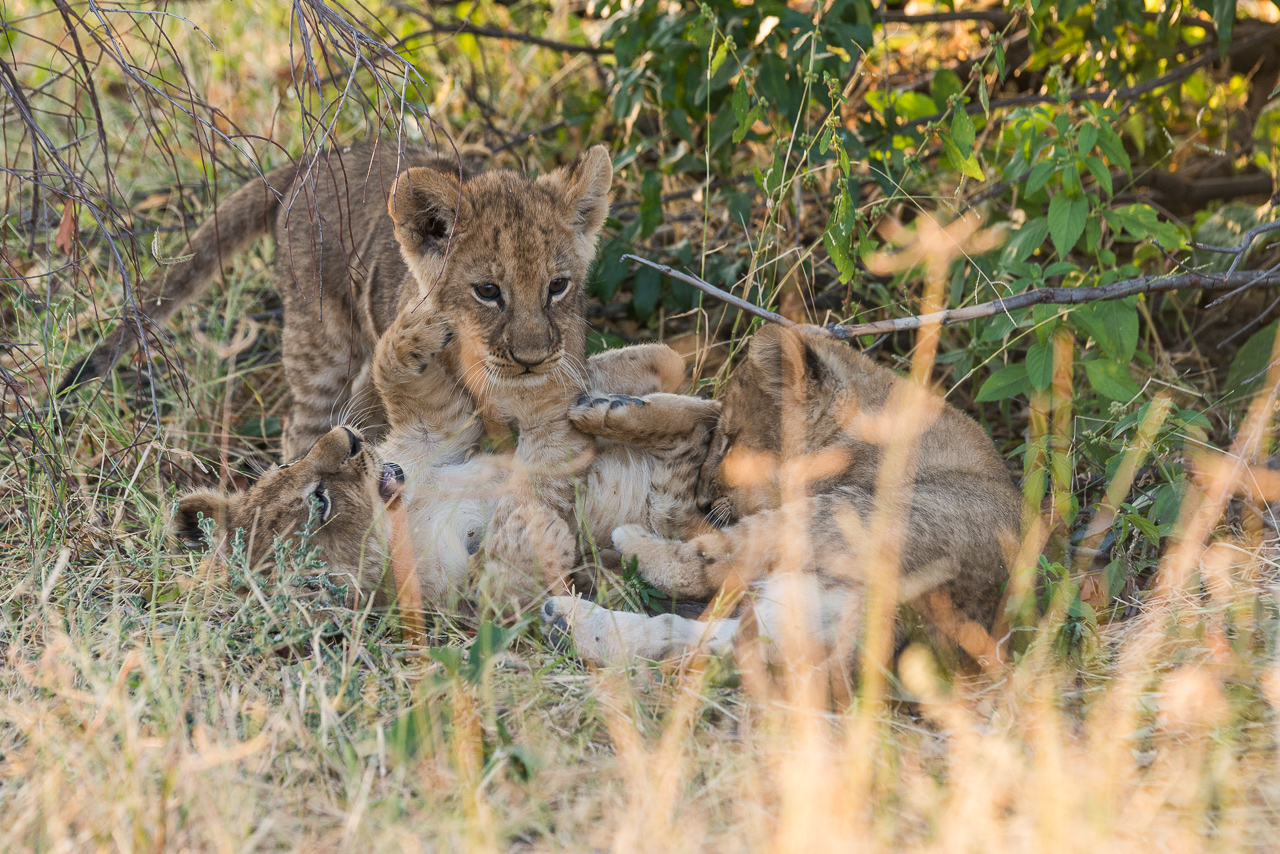
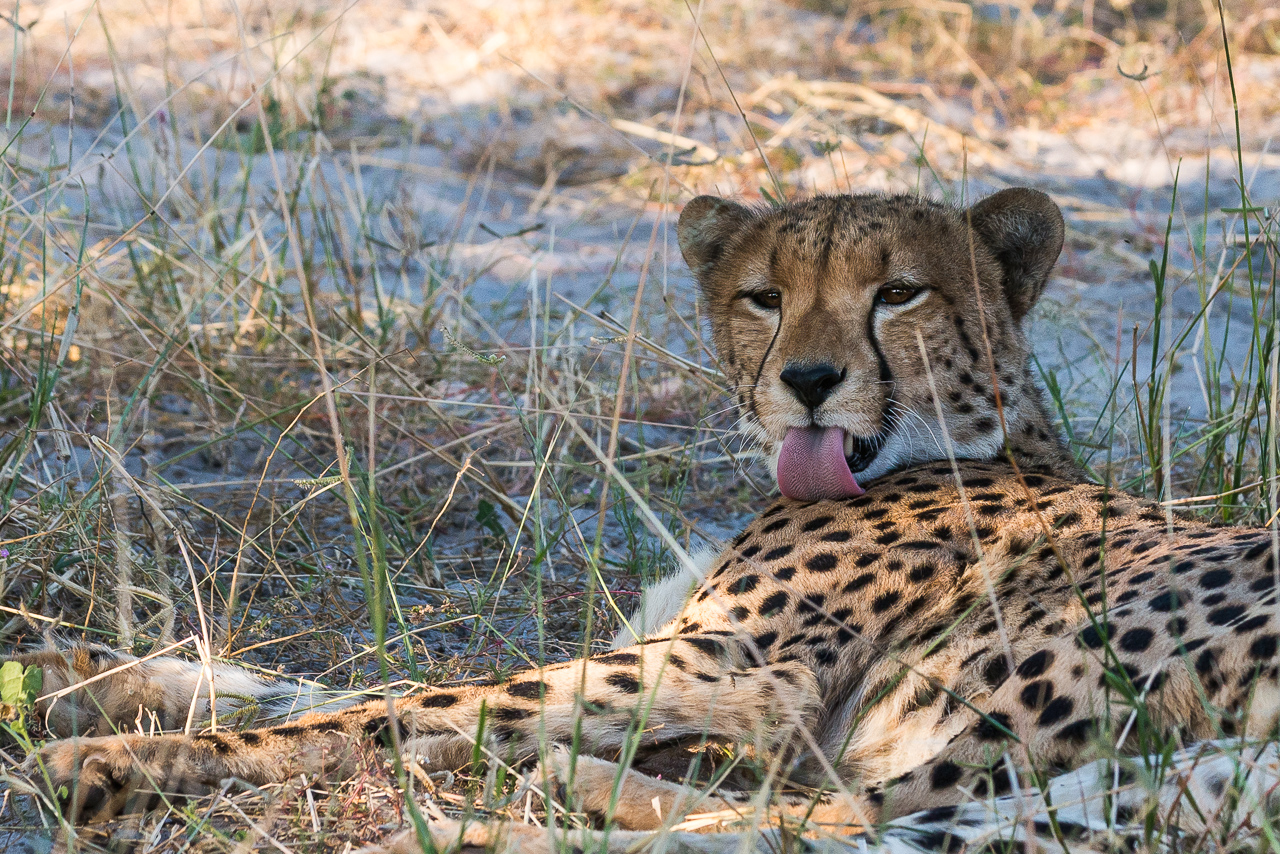
Accommodation Inspired by one of the Okavango Delta’s most secretive inhabitants, the guest areas of Sandibe Safari Lodge rise out of the trees clad in a wooden skin of shingles and timber that mirrors the pangolin’s body armour of overlapping scales.
Sandibe has 12 suites, two of them connected to form a family suite. All are elevated to maximise the views over the permanent Santantadibe Channel and tall reed beds. Like the main area, these new suites are decorated in light wooden tones, and they are vast.
Each has an open-plan lounge area with air conditioning for hot summer days, and a free-standing fireplace for chilly evenings. There's a comfortable leather 'beanbag' sofa, a polished tree-stump for a coffee table, a well-stocked minibar, and a discreet hatch where staff outside can put your tray of morning tea/coffee ready for you to grab it from the comfort of your enormous king-size bed, covered by a walk-in mosquito net.
Large wooden sliding doors at the front of the bedroom can be opened up completely onto a private multi-level wooden deck. Here you'll find a rim-flow plunge pool, a sala area, an outdoor shower and a daybed.
Sandibe Safari Lodge is only accessible by light aircraft. The camp is situated approx. 30 minutes drive from Chitabe Airstrip. Flight time to Maun in a Cessna Caravan is 30 minutes, and 1 hour 30 minutes to Kasane.
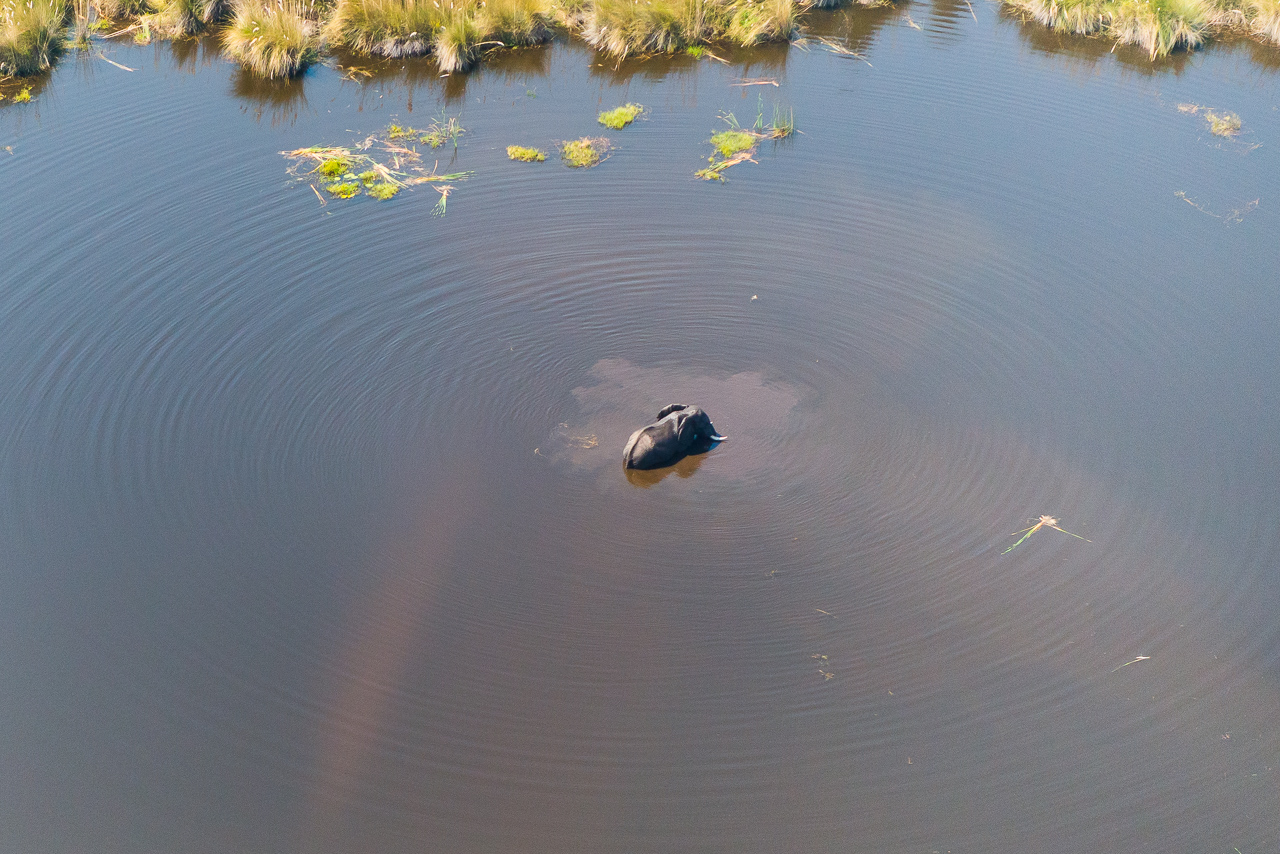
Guests can look forward to first-class service at exclusive and stunning lodges set amid pristine wilderness. The Okavango Delta is an inland delta in the north of Botswana, which can be accessed via Maun or Kasane. Some areas on the edge of the delta are accessible by vehicle, but the vast majority of lodges here are located deep in the delta, which means they are only accessible by air and therefore highly exclusive.
The Okavango Delta plays host to a fascinating cycle of rain, flood, drought, heat and cold. These processes determine the behaviour of the animals and their migration paths. The onset of rain in November / December leads to the appearance of spectacular green meadows as dormant flora springs back to life, trees sprout new leaves and colours become vivid and saturated. The vast majority of animals give birth to their young at the beginning of the wet season, which means the whole area is teeming with baby elephant, impala and kudu – big cat often gives birth to its young at this time too.
The sporadic rains continue until the end of March. Temperatures slowly drop and a feeling of spring sets in around April. The nights become cooler and dew settles on the grass, causing it to sparkling in the sun’s first rays of light when guests can be found pulling up their hoods in preparation for the early morning game drives. The floodwaters reach the delta in April, sometimes earlier, and, covering immense areas, expand outward like a living, breathing organism. The floodwater is basically rainwater from the mountains of Angola, which slowly accumulates in the Okavango River over a period of several months. It squeezes through the panhandle, which is where the Okavango Delta fans out, and then floods the entire region. The well-equipped game drive vehicles struggle through metre-deep water from one island to the next, leaving passengers awestruck and wondering how the journey is at all possible.
The coolest temperatures are measured in June / July, when night time lows can drop as far as 5°C, and welcome hot water bottles are duly distributed! Well-wrapped guests come prepared for the early morning game drives with hats, gloves and warm jackets. Daytime temperatures are pleasant and the skies are clear with bright sunshine – every day! The sun’s heat dominates once again as September approaches, the alluvial areas begin to dry out and the short, dry grass offers a clear and welcome view of the entire spectrum of wildlife here. Temperatures climb to their maximum in October as the whole parched region once again anticipates the coming rains. When huge clouds begin to gather on the horizon, you know it’s only a matter of time until the whole cycle begins again.
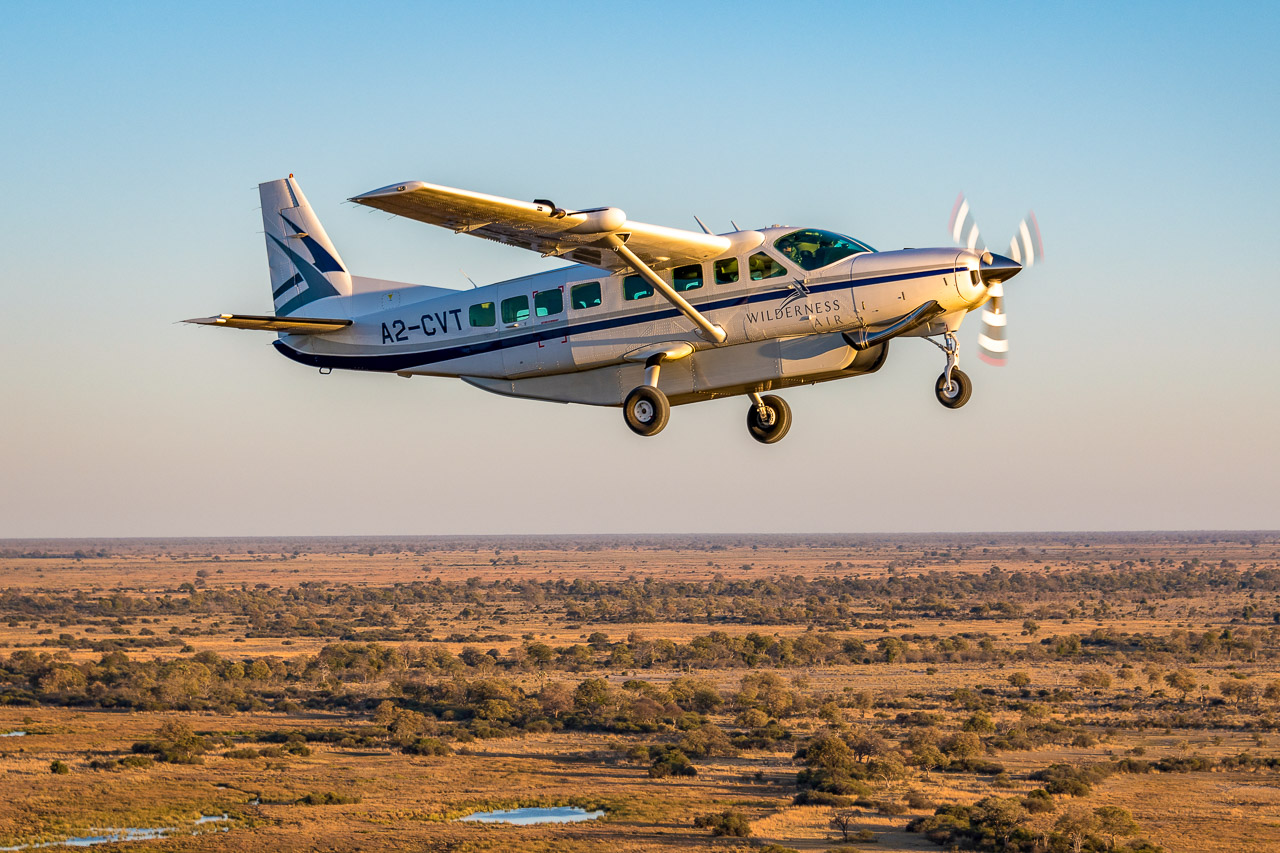
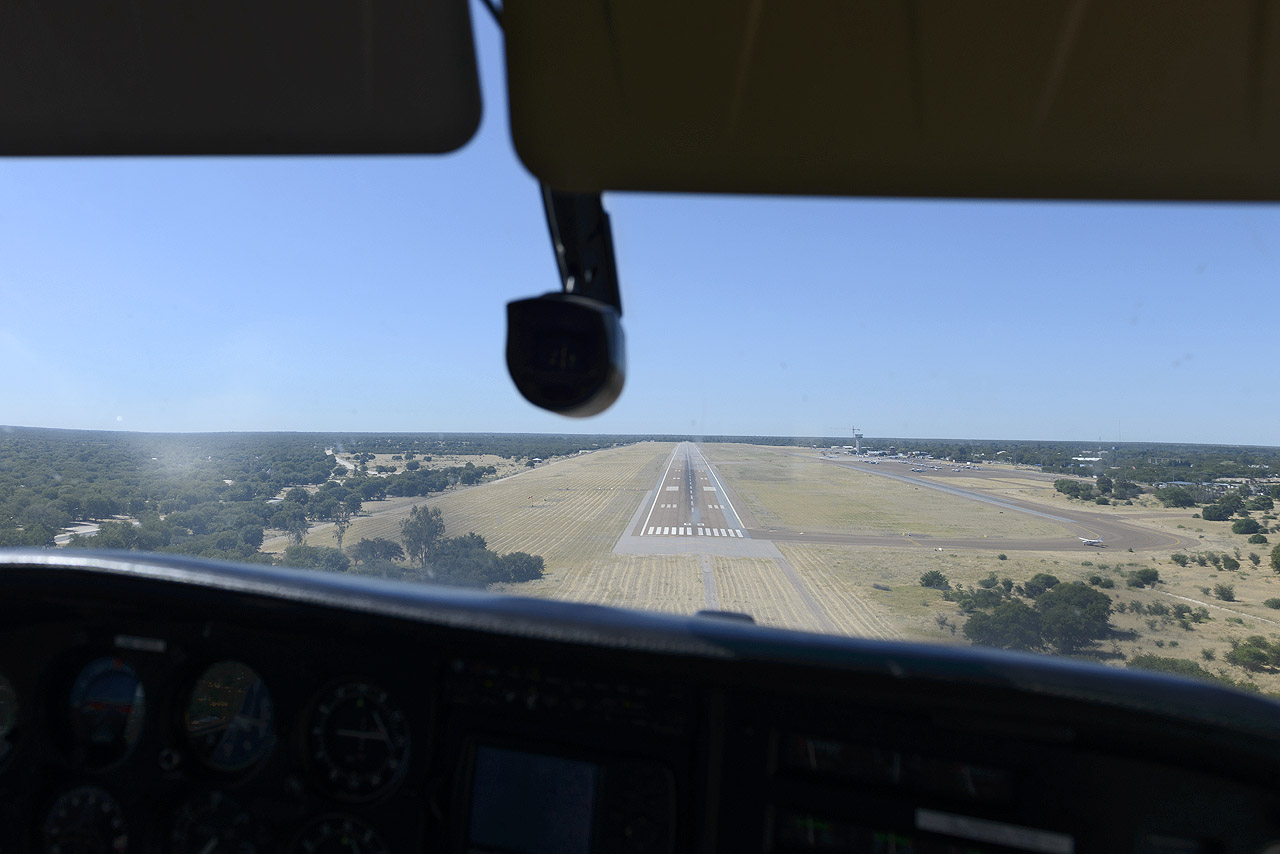
Basic Information
Individual journey. The journey will be planned on your preferred dates.
Duration 9 nights. Min 2 guests. Minimum age 6 years. Weight limit of luggage 20 kg. Luggage in one soft bag only.
Includes all transfers from Maun to the hotels/camps to Maun
- Jack's Camp: Double Room. All meals, drinks (except premier brands), laundry service, twice daily shared activities with one of the camp guides.
- Duma Tau Camp: Double Room. All meals, drinks (except premier brands), laundry service, twice daily shared activities with one of the camp guides.
- Sandibe Okavango Lodge: Double Room. All meals, drinks (except premier brands), laundry service, twice daily shared activities with one of the camp guides.
Learn more about these areas










